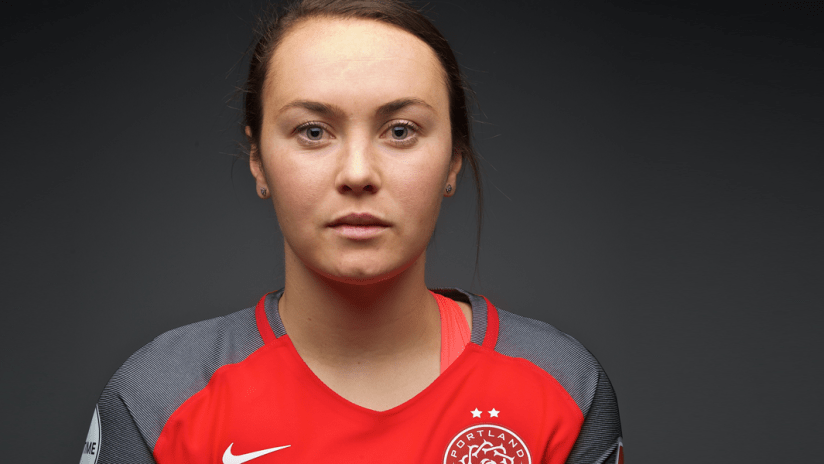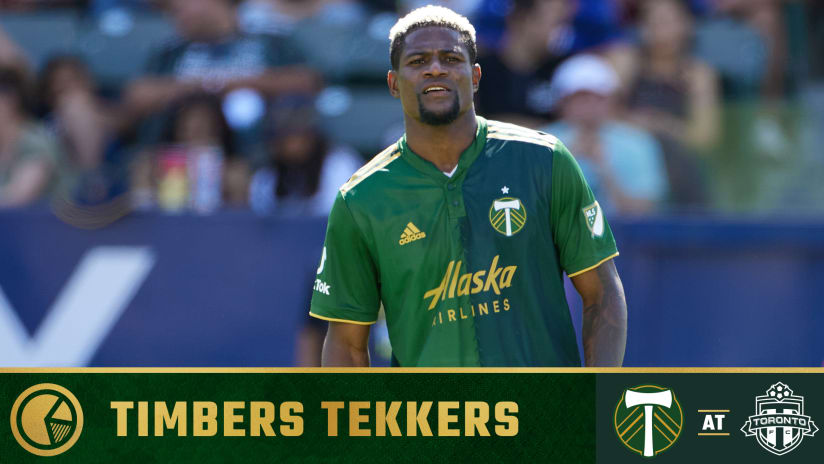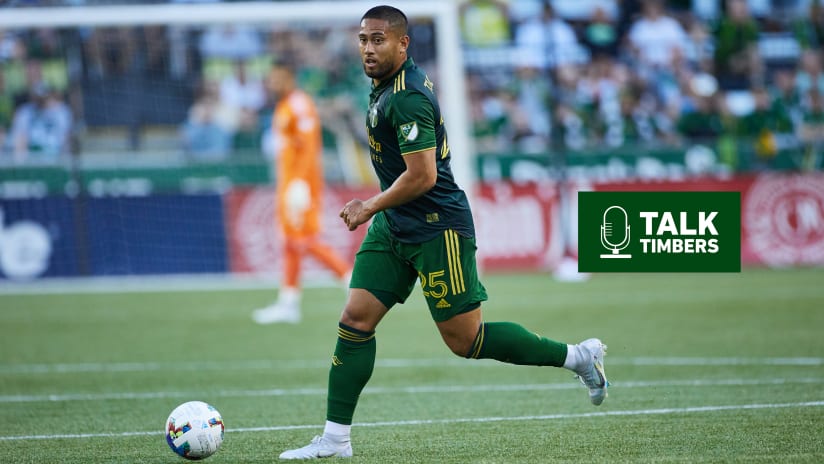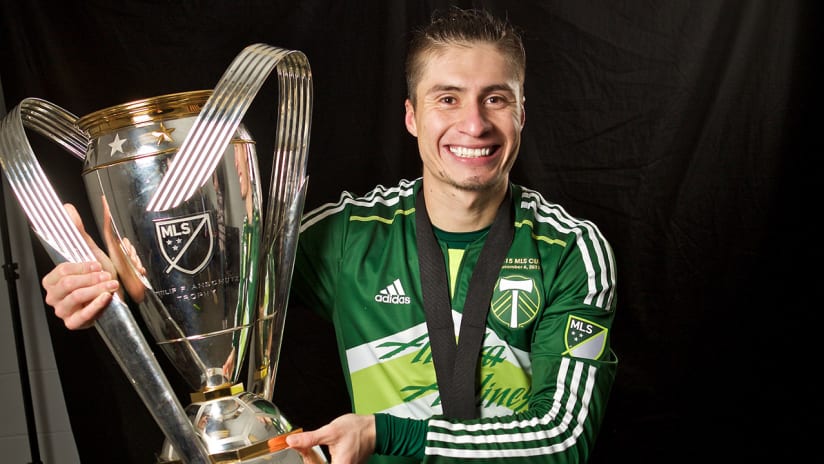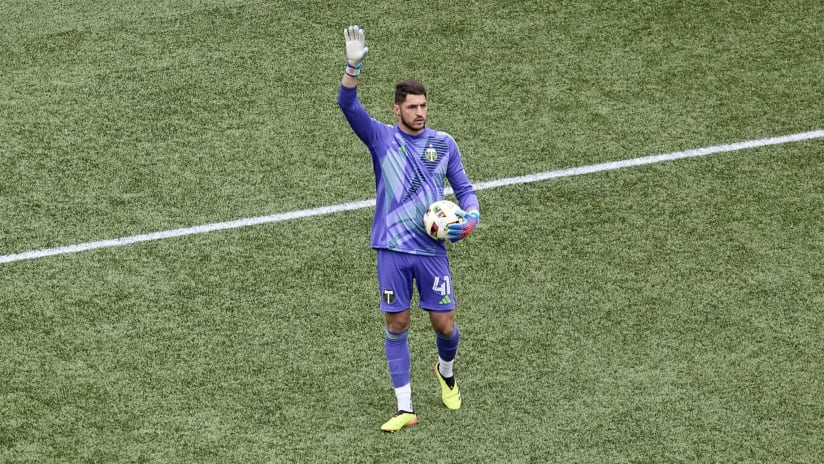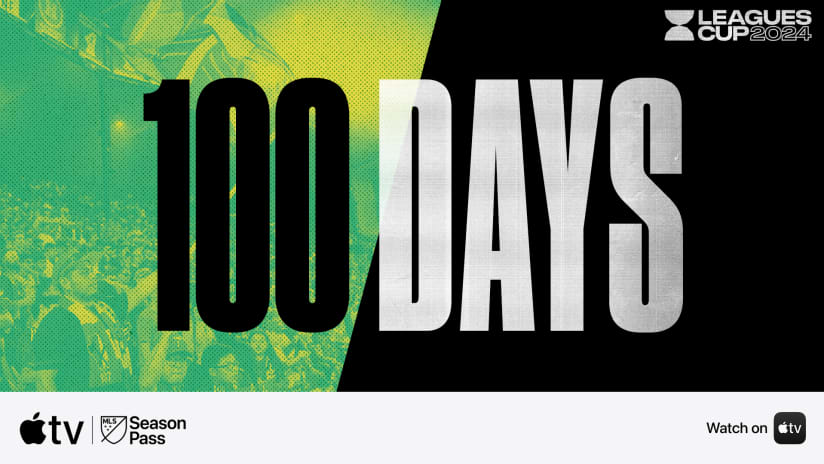BEAVERTON, Ore. – “I’ve wanted to be in the NWSL these last two seasons.”
It’s a month before Caitlin Foord will make her Portland Thorns FC debut. She’s been back with the team for nearly four weeks, though, completing the last phases of a recovery that’s delayed her North American return. The pop in January, during her last Australian W-League game of the season, had felt too familiar. She knew she’d be out for a while.
“I knew straight away,” the 23-year-old attacker says about the lisfranc injury that would cost her six months. “I’ve done this injury on my other foot, as well. It was all too similar.”
It’s now mid-July. Foord’s just completed one of her first full-contact sessions with the Thorns, playing on the second team as Portland’s starters prepare for the weekend’s trip to Sky Blue FC. Debuting for Portland against her former team would be an appropriate coda to her two-year absence, but after weeks of working on her own, she’s still building her fitness. A trip to the Tournament of Nations, with her national team, awaits the 23-year-old, with the most important part of the NWSL season still to come. Portland can afford to be patient.
“I haven’t really thought too much about it,” she says, when asked about how the NWSL will be different for her, now. “I’m just focused on getting back on the field.”
Even before that return, it’s clear that Foord’s transformed. She’s a much different player than the one that left Sky Blue. Then, in 2015, she was built more like a distance runner, forged to tackle the long pursuits and recoveries that define life in soccer’s wide spaces. She was a fullback, then, as well as a wide attacker, but over the two years she’s been away from North America, she’s become something else. Stronger, more powerful, groomed to take people off the ball, Foord has been brought to Portland to play a striker’s role. This is not the player people will remember from Sky Blue. She looks like a sprinter, now, instead of the marathoner she was, before.
“I used to get pushed off the field, a little bit,” she says, understatedly, almost as if her transformation is a euphemism. “Now, I feel like I can hold my ground. I feel like that would be the biggest difference from when I’d gone away and come back.”
The game goes beyond the field
She admits it, now, looking back at her former self. She loved playing the game, so much so that, five years ago, she was willing to travel a world away from her New South Wales home to pursue her career. But the life around the field – the studying; the gym work; the minute-to-minute choice that define an athlete’s career – she wasn’t about that, yet.
“I hated watching soccer,” she admits, confessing a feeling that didn’t fully go away until her recent time off. “I liked playing [soccer], but I never watched it.
“Being injured, you can’t play, (so) I started watching it a lot. Being able to see things through watching it, I feel like I’ve learned a lot. Hopefully that helps me within my game.”
Other aspects of the game – points she was introduced to during her first stint in the States – started to make sense, too, even if she never fully embraced them until she was abroad.
“The biggest thing for me that I didn’t take out of America that I wished I would have was the lifting side of things,” she says, partially explaining why she’s returned with a completely different look. When she arrived in 2013, Foord was only 18, part of an Australian contingent that would grow, and provide a significant talent boost to the NWSL.
Back then, though, she Foord still developing her day-to-day habits, still coming into her own playing identity. She was still transitioning from player to pro.
“At Sky Blue, when we had team lift, I was the one in the corner, not doing very much, because I hated it, so much,” she remembered. “I was like, ‘I’m not doing this!’ The whole time I was there, I didn’t really do that.”
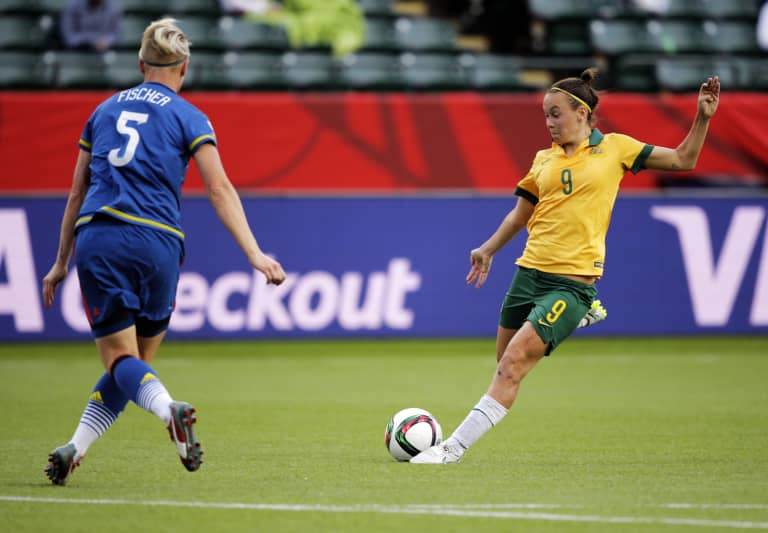
After having surgery for a collarbone injury in early 2016, Foord’s habits changed. As she’s discussed before, that time away from the field meant her only recourse was to adopt a more regular gym routine. The result was a new player; a new Caitlin Foord.
“My trainer at home made me begin to love [lifting], and I realized how much of a difference it did make to my game,” she says. “Before I was lifting, I was having little quad tears, little hammy tears all the time. Obviously, I could work out. It didn’t even cross my mind that strength was that.…
“Any time, before, I would have stepped on the field, my first game, I would have almost guaranteed I would have done a quad or a hammy. But I actually got through [returning from her collarbone injury] 100 percent, and I was feeling very strong. I noticed the biggest difference in my game, then.”
Those habits were part of the larger process of growing into herself. At 18 years old, few of us know what we want to be, let alone how to navigate the world. Foord had one of those problems solved, being focused on her soccer, but the day-in, day-out realities of that life were still evolving. Now, five years older, the Best Young Player at the 2011 World Cup has learned how to structure her world.
“When I’m happy off the field, it really shows on the field,” she says, saying she knows she can’t be “football, football, football, football.” “For me, it’s just find that balance.”
Scoring goals, instead of preventing them
Transforming herself into a player who could physically handle a new position is one thing. Actually performing in the role is another entirely. But thanks to a season in Japan, playing for a coach that would rely on her pace and strength at the top of his formation, Foord was given a high-level practicum that completed her transition.
She can still play wide, now, and does so on occasion. But now, when you’re scouting Foord, you’re scouting somebody who can take on the best centerbacks in the world – somebody who can play up top by herself.
“I was one of the bigger players there,” Foord says, of her time with Vegalta Sendai in Japan’s Nadeshiko first division. “My coach wanted to use me as a nine, just to bounce off in behind. There were some better teams than us,” Vegalta going on to finish fourth in the 10-team league, “so if things weren’t going well, my coach just wanted to knock the ball in behind, for me to run onto …
“That was a massive challenge for me, to have to play a different style of game than what I was used to, and what I thought were my strengths taken out of my game, per se.”
Her strengths, as she sees like, lie in “having the ball at my feet, dribbling.” Kazuo Echigo didn’t want any of that, according to Foord, but in the process of precluding her from being that player, he helped develop the other parts of her game. Between the tactics, the training to promote a more technical game, Foord was forced out of her comfort zone.
“One of the things I regret before going there is, when I was younger, whatever passing drill it was, because my left foot wasn’t so good, I’d hide behind my right, and use it where I should be using my left. Over there, everything is right and left foot, no matter how bad you are. The little kids that train after us, all of them would train with both of their feet …
“We were on the field for long hours. They would normally do two-hour sessions every day,” for five days a week, she explained. You’d have one day off, another for the game, and beyond that, you were on the training field.

“That’s pretty insane for me. I’d go on the field, shower, get in my car, and my teammates would still be on the field training. They spent a lot of hours, and I think, from being there and experienced how they train, that’s where you notice how technically good they are, how well they are at possession. They just practice, practice, practice until it’s perfect in what they do.”
Practice until they’ve made Foord into what she is now. When she left the NWSL after the 2015 season, she had all the explosiveness you’d want from an emerging attacking talent. But thanks to her season in Japan and her development with Australia, Foord returns to the NWSL as a player who can move on from others’ memories, solidifying her identity as something that’s closer to her heart.
“I like being creative,” she admits, “and even when I was at the back, I always wanted to get forward. It was my first instinct to get forward. Being more up on the field, obviously have a bit more freedom to try to be creative and more things happen. That’s what I like most. Being unpredictable, just being able to play freely.”
The path back to North America
Staring across one of the training center’s fields, describing the life lessons she learned from a year in a different culture, Foord realizes how much she’s grown since the last time she lived in the United States. She also knows, though, that in other worlds, where league rules might be different, she would have never left. But after three years with Sky Blue, the time had come for her to move on, with her year back home before her time in Japan giving the NWSL’s other teams time to lure her from Sky Blue.
In January, the move finally happened, with Seattle Reign FC acting as an intermediary between Sky Blue and the Thorns. In a deal that sent U.S. international Allie Long north, Portland acquired the rights to Foord, who had been sent to Seattle for New Zealand international Rebekah Stott and Mexico international Katie Johnson.
“I can’t even explain to you how excited I was to finally be traded, but not only be traded but come to Portland,” Foord admits. With fellow Australians Hayley Raso and Ashleigh Sykes a part of Portland’s 2017 championship team, Foord knew about the Thorns’ culture. “If there was one team I wanted to be traded to, it was here.”
The feeling was mutual. Over the course of the 2017 season, Thorns head coach Mark Parsons had implemented an approach that was increasingly demanding of his forwards. The pressing scheme demanded of his highest attackers precluded most players from excelling in the system. When the team looked across the landscape and tried to identify players who could thrive within the approach, Foord stood out.
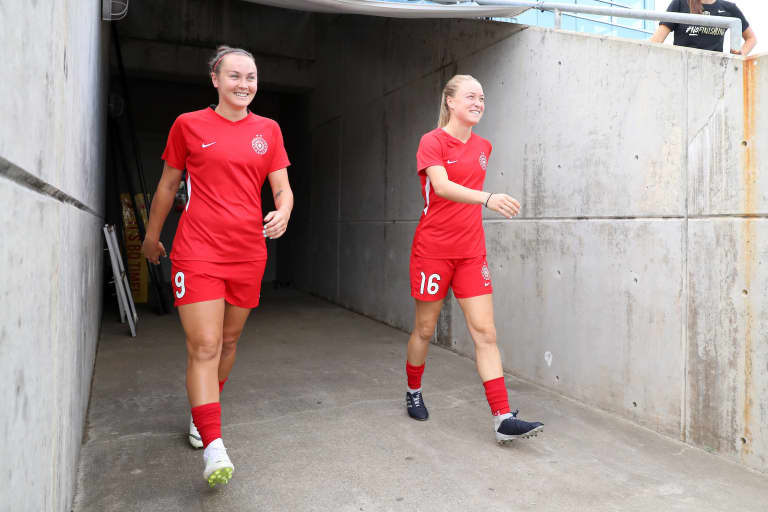
Thus, the team decided to use its most valuable trade chip, Long’s rights, on a player who’d never played striker in the NWSL, one who’d been away from the league for years. But the idea of adding someone of Foord’s talent – someone who’d emerged as a key part of one of the best national teams in the world – made too much sense to ignore. Even though Portland had to give up a U.S. international, it was worth it to bring back Foord.
“Obviously, Mark, he’s very positive,” Foord explained, when talking about why Portland fit for her, “and he wants players to do what they’re good at. In Japan, I wasn’t doing the things I wanted to do, but [Parsons] has full positive vibes in me to go out there and do what I can do, to give me the freedom, which I think will be the nicest thing – to not have pressure to do this or that.”
That lack of pressure has been evident over Foord’s first two Thorns appearances. She was kept out of the team’s visit to Sky Blue – the downpour at Yurcak Field making it unwise to run her out – but got time with Australia at the Tournament of Nations. Upon returning to with the Thorns, she was unleashed on North Carolina over a final, frantic 32 minutes on Aug. 5, tormenting the likes of U.S. internationals Abby Dahlkemper and McCall Zerboni while testing the lead official’s leniency with yellow cards. Six days later, she got 35 minutes in Orlando, generating two shots as the Thorns got back into the win column.
That was step one: the playing time. Step two is showing what she’s become. Over the past two years, Foord has started to touch her potential, becoming a player that’s completely different than the one that played in the U.S. before. Now, it’s time to show the league what she can do.
“I just want to be back out there, at the moment,” she said, at training, now over a month ago, “but I’m here to score in the NWSL. Some goals would definitely be nice.”

